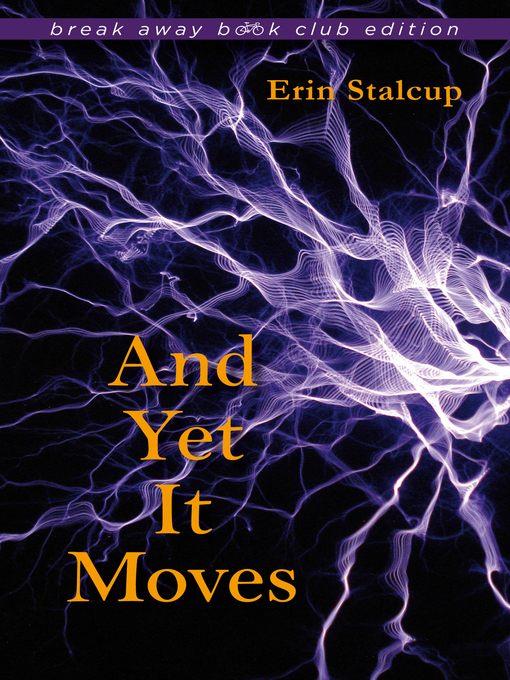
And Yet It Moves
Break Away Book Club Edition
کتاب های مرتبط
- اطلاعات
- نقد و بررسی
- دیدگاه کاربران
نقد و بررسی

May 25, 2015
In this daring novel, Yuknavitch (The Chronology of Water) takes a provocative look at the intimate relationship among love, art, and sex in a group of emotionally scarred artists who want to save one of their own. Written in the voices of characters without first names—photographer, writer, poet, performance artist, playwright, filmmaker, and painter—the novel begins in modern Eastern Europe (likely Lithuania), occupied by an unseen force, where a photojournalist captures an award-winning shot: a young girl running from her exploding home, in which the rest of her family dies. The girl escapes into the woods, making her way to a widow’s home; the widow teaches her about art, and the girl begins to paint. Meanwhile, an American writer who is friends with the photographer, is hospitalized with severe depression. The writer’s best friend, a poet, believes she can help the writer; she enters the war zone to bring the orphaned girl to the United States. Yuknavitch’s novel is disturbing and challenging, but undoubtedly leaves its mark.

May 23, 2016
The ever-present, everyday magic in Stalcup’s debut collection overlays the mundane world like mist and blurs the lines between the prosaic and the fantastic, in stories that examine life and loss. These losses include a lost child in “Einstein,” in which a dying Albert Einstein writes letters to the daughter he gave away when she was two years old (Stalcup’s choice among the many theories about what happened to the girl, whose true fate is unknown); the loss of self by the hired author of suicide notes in “Ghost Writer”; and lost opportunities in the nonspeculative missed-connections world of “Brightest Corners.” But loss flows alongside restored hope. In “Keen,” professional funeral keener Maeve sings for an otherwise lost soul, and in “Galileo, Hawking, Rabinowitz,” budding physicist Elizabeth Rabinowitz is determined to hunt down the Theory of Everything despite the sexist behaviors of her fellow scientists. Stalcup’s fabulist prose-poetry takes readers on tours of today’s dreams and Nikola Tesla’s memories, her writing surreal but solid enough for the reader to lean against. Stalcup’s work has primarily appeared in literary magazines, but this collection will easily find a home with readers of speculative fiction.

May 1, 2015
A grieving mother becomes obsessed with a famous photograph of a child fleeing a war zone. Yuknavitch (Dora: A Headcase, 2012, etc.) made an impression with her transgressive memoir The Chronology of Water, and her new novel features similar plot points and themes. The primary narrator (all except one of the characters are unnamed) is a bisexual writer, a recovering heroin addict, a wife, the mother of a dead daughter and a "strange and alive boy." She has become fixated on the subject of a photograph from an Eastern European conflict that portrays a young girl running away from the explosion that destroyed her home and killed her family. In recounting her life and art, the writer loosely describes a group of friends and family that includes her brother, the playwright; her husband, the filmmaker; her former lover the combat photojournalist; a deeply damaged performance artist; and her best friend, a fiercely ambisexual poet. None of these characters is particularly interesting, and they merely serve as players in the writer's ruminations on art and the violent, sexually charged sections that follow. When the writer collapses and is hospitalized, presumably from the weight of her grief, the poet becomes convinced they need to travel overseas to find the girl in the photo and bring her to safety. The narrative largely collapses into literary experimentalism at this point, with chapters posed as screenplays, fragmented imagery, poetry, minimalism, and white space substituted for storytelling. This isn't necessarily a negative-Yuknavitch is a gifted writer whose dizzying passages are often as compelling as they are grotesque. But it's not a pretty story, and the novel's affected musings on the nature of art, gratuitous sexual excesses, and casual violence may overpower the grace of its words for some readers. Patricia Highsmith by way of Kathy Acker in a highbrow thriller that says as much about its writer as its story.
COPYRIGHT(2015) Kirkus Reviews, ALL RIGHTS RESERVED.

February 1, 2015
In war-shattered Eastern Europe, a photographer captures the image of a girl fleeing her home and family as they go up in flames. Bringing the girl to America is meant to lift the photographer's deeply depressed best friend, who was particularly moved by the photograph, but soon the questions start. High on my much-anticipated list; the author's small-press "Dora: A Headcase" was a fresh and original read.
Copyright 2015 Library Journal, LLC Used with permission.

























دیدگاه کاربران